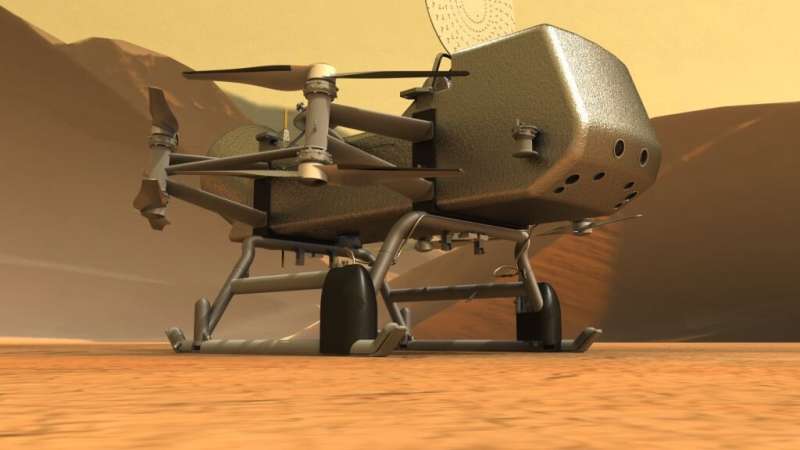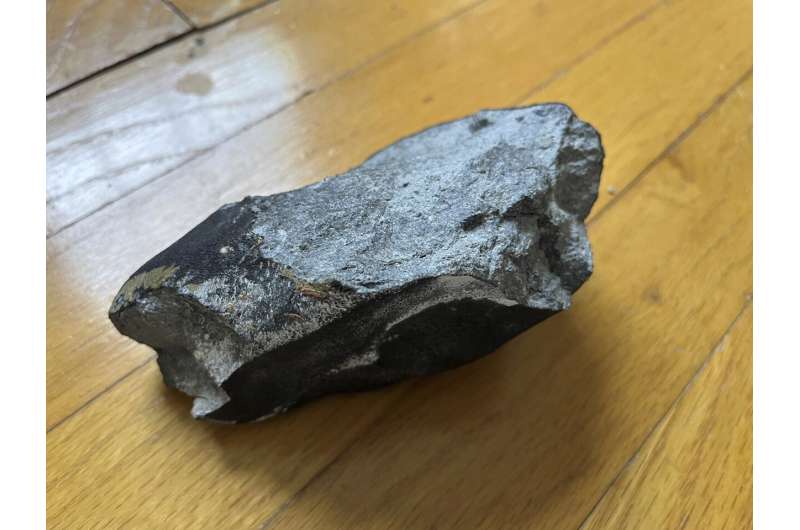
Copernical Team
Populous engaged by RS&H for New Mexico's Spaceport America Master Plan
 The New Mexico Spaceport Authority (NMSA) has awarded the Spaceport America Master Plan Project to the RS&H team, with Populous and Zia Engineering and Environmental Consultants respectively leading key aspects of the future visioning and environmental stewardship critical to the project. Spaceport America and NMSA will partner with the team to identify the current and future market opportunitie
The New Mexico Spaceport Authority (NMSA) has awarded the Spaceport America Master Plan Project to the RS&H team, with Populous and Zia Engineering and Environmental Consultants respectively leading key aspects of the future visioning and environmental stewardship critical to the project. Spaceport America and NMSA will partner with the team to identify the current and future market opportunitie Imaging satellite takes piggyback ride on spacecraft
 The first satellite designed and built in China's northeastern province of Liaoning has been carried into space by the Tianzhou 6 cargo spacecraft, which was launched on Wednesday night, according to the Dalian University of Technology.
Developed by the university in the coastal city of Dalian, the Dalian 1-Lianli is a 17-kilogram mini Earth-observation satellite and is tasked with demonst
The first satellite designed and built in China's northeastern province of Liaoning has been carried into space by the Tianzhou 6 cargo spacecraft, which was launched on Wednesday night, according to the Dalian University of Technology.
Developed by the university in the coastal city of Dalian, the Dalian 1-Lianli is a 17-kilogram mini Earth-observation satellite and is tasked with demonst Upcoming ISS project will test 3D materials for satellite manufacturing
 As 3D printed rockets, car parts, and even homes begin to hit the market on Earth, L3Harris Technologies aims to leverage the International Space Station (ISS) National Laboratory in its search for durable materials to 3D print satellite components. Before 3D printed materials can be used to build more sustainable and efficient parts for spacecraft, they must be tested to ensure they can withsta
As 3D printed rockets, car parts, and even homes begin to hit the market on Earth, L3Harris Technologies aims to leverage the International Space Station (ISS) National Laboratory in its search for durable materials to 3D print satellite components. Before 3D printed materials can be used to build more sustainable and efficient parts for spacecraft, they must be tested to ensure they can withsta NASA and partners achieve fastest space-to-ground laser comms link
 On April 28, NASA and its partners achieved another major milestone in the future of space communications - achieving 200 gigabit per second (Gbps) throughput on a space-to-ground optical link between a satellite in orbit and Earth, the highest data rate ever achieved by optical communications technology.
These data rates are made possible by using laser communications, which packs informa
On April 28, NASA and its partners achieved another major milestone in the future of space communications - achieving 200 gigabit per second (Gbps) throughput on a space-to-ground optical link between a satellite in orbit and Earth, the highest data rate ever achieved by optical communications technology.
These data rates are made possible by using laser communications, which packs informa Sidus Space selected by OneWeb to manufacture satellite hardware
 Sidus Space, Inc. (NASDAQ:SIDU), a leading provider of machined parts to the global space industry, has been selected by Airbus OneWeb Satellites, LLC (AOS) to design and build machined parts. The machined parts will be integrated into the portfolio of Arrow commercial small satellites manufactured by AOS.
Airbus OneWeb Satellites LLC is a joint venture between Airbus and OneWeb. AOS manuf
Sidus Space, Inc. (NASDAQ:SIDU), a leading provider of machined parts to the global space industry, has been selected by Airbus OneWeb Satellites, LLC (AOS) to design and build machined parts. The machined parts will be integrated into the portfolio of Arrow commercial small satellites manufactured by AOS.
Airbus OneWeb Satellites LLC is a joint venture between Airbus and OneWeb. AOS manuf USAF awards contract to Above: Orbital and Ascent Solar for on-orbit PV production
 Above: Orbital, Inc. has been awarded a significant contract from the United States Air Force for On-orbit Manufacturing of Thin-Film Solar Photovoltaics in partnership with Ascent Solar Technologies, Inc. (NASDAQ: ASTI), the leading U.S. innovator in the design and manufacture of featherweight, flexible, and durable CIGS thin-film photovoltaic (PV) solutions.
The Small Business Innovation
Above: Orbital, Inc. has been awarded a significant contract from the United States Air Force for On-orbit Manufacturing of Thin-Film Solar Photovoltaics in partnership with Ascent Solar Technologies, Inc. (NASDAQ: ASTI), the leading U.S. innovator in the design and manufacture of featherweight, flexible, and durable CIGS thin-film photovoltaic (PV) solutions.
The Small Business Innovation What if Titan Dragonfly had a fusion engine?

In a little over four years, NASA's Dragonfly mission will launch into space and begin its long journey towards Titan, Saturn's largest moon. As part of the New Frontiers program, this quadcopter will explore Titan's atmosphere, surface, and methane lakes for possible indications of life (aka. biosignatures).
This will commence in 2034, with a science phase lasting for three years and three and a half months. The robotic explorer will rely on a nuclear battery—a Multi-Mission Radioisotope Thermal Generator (MMRTG)—to ensure its longevity.
But what if Dragonfly were equipped with a next-generation fusion power system? In a recent mission study paper, a team of researchers from Princeton Satellite Systems demonstrated how a direct fusion drive (DFD) could greatly enhance a mission to Titan. This New Jersey-based aerospace company is developing fusion systems that rely on the Princeton Field-Reversed Configuration (PFRC).
This research could lead to compact fusion reactors that could lead to rapid transits, longer-duration missions, and miniature nuclear reactors here on Earth.
Experts: Metallic object that crashed into New Jersey home was a meteorite

Monitoring fluctuating forest carbon from space

Monitoring fluctuating forest carbon from space
Tianzhou 6 docks with Tiangong space station
 The Tianzhou 6 robotic cargo ship connected with the Tiangong space station early Thursday morning, according to the China Manned Space Agency.
In a brief news release, the agency said the cargo craft docked with the Tiangong station's rear hatch at 5:16 am and began to fly with the station in a low-Earth orbit about 400 kilometers above Earth.
Crew members of the Shenzhou XV mission
The Tianzhou 6 robotic cargo ship connected with the Tiangong space station early Thursday morning, according to the China Manned Space Agency.
In a brief news release, the agency said the cargo craft docked with the Tiangong station's rear hatch at 5:16 am and began to fly with the station in a low-Earth orbit about 400 kilometers above Earth.
Crew members of the Shenzhou XV mission 